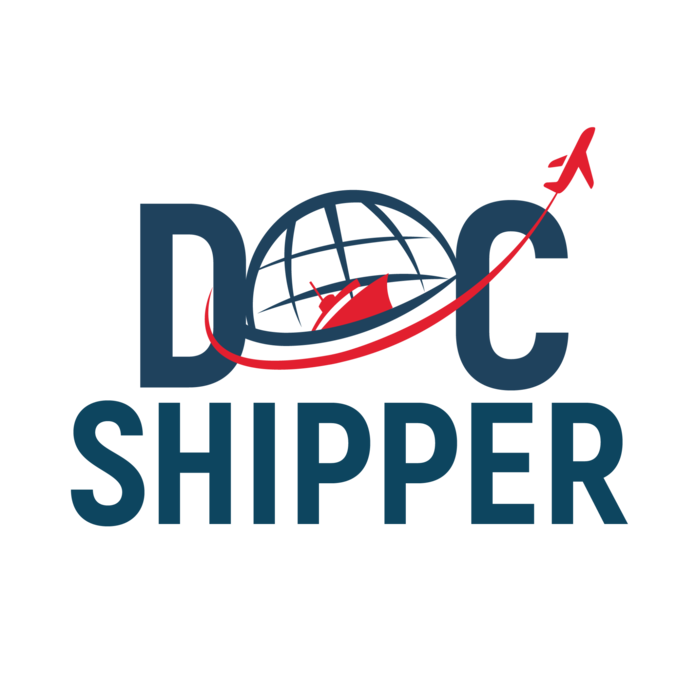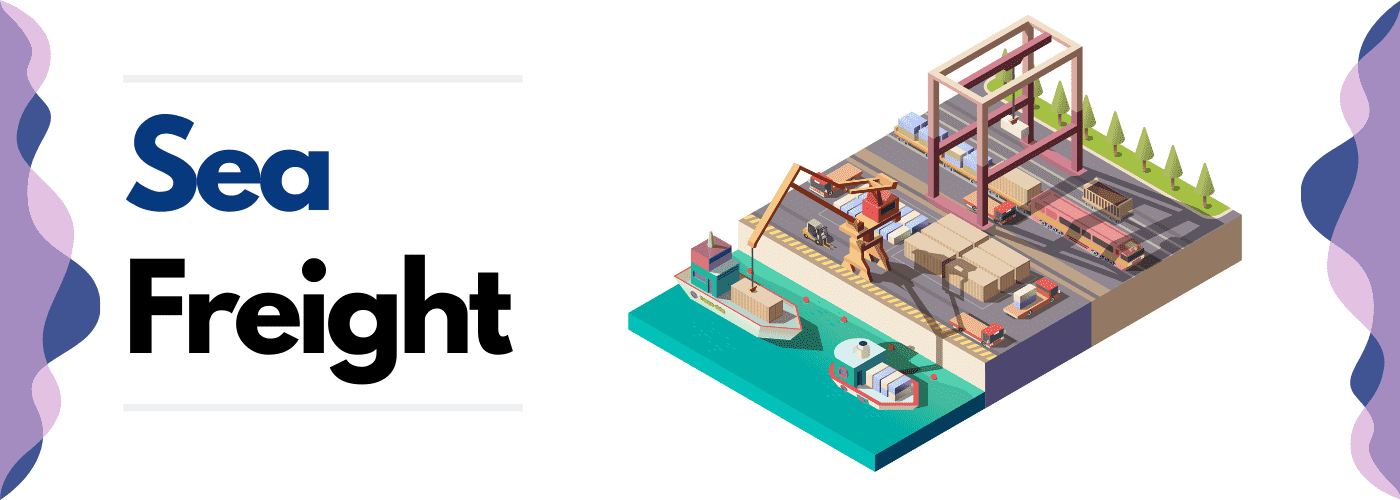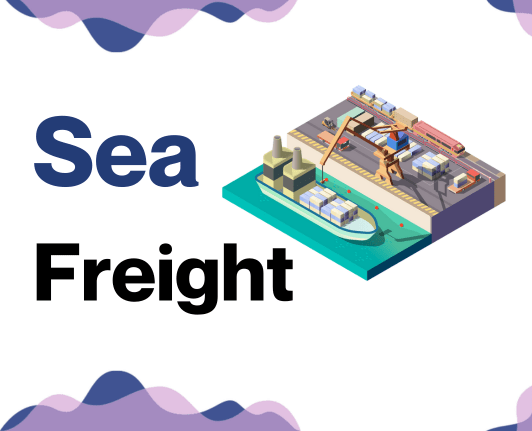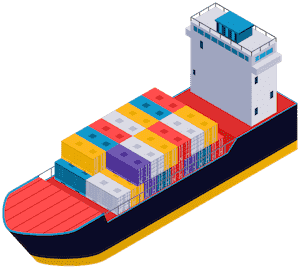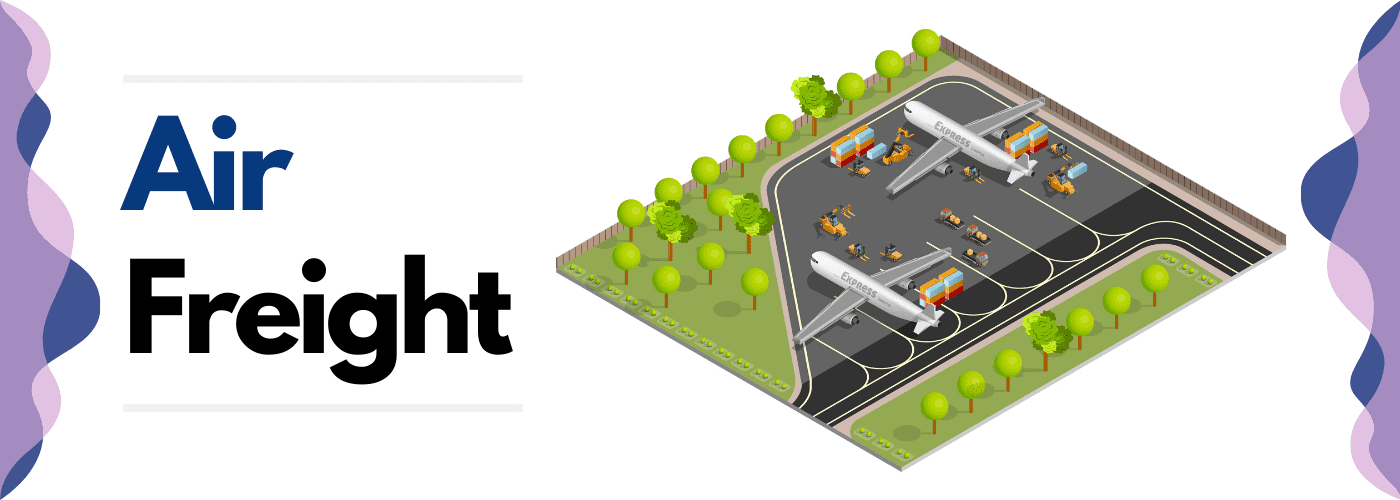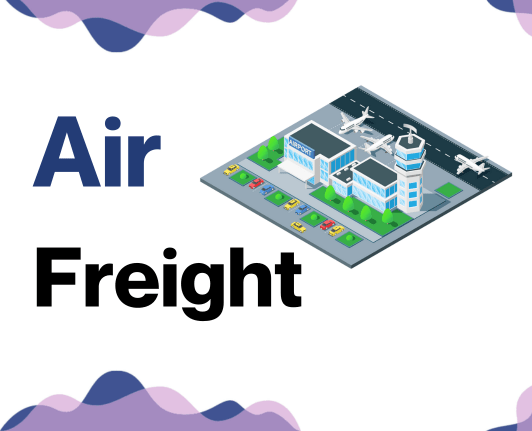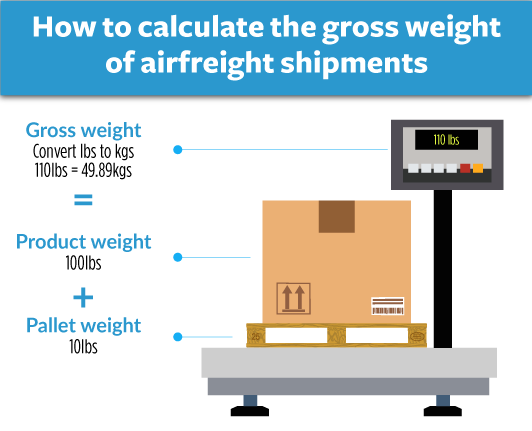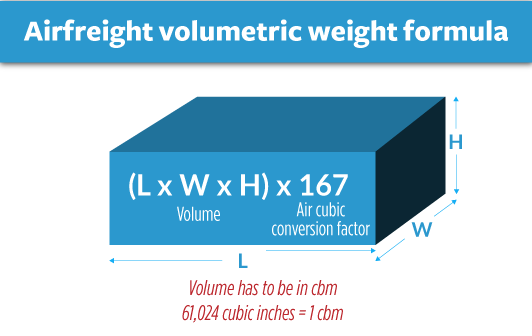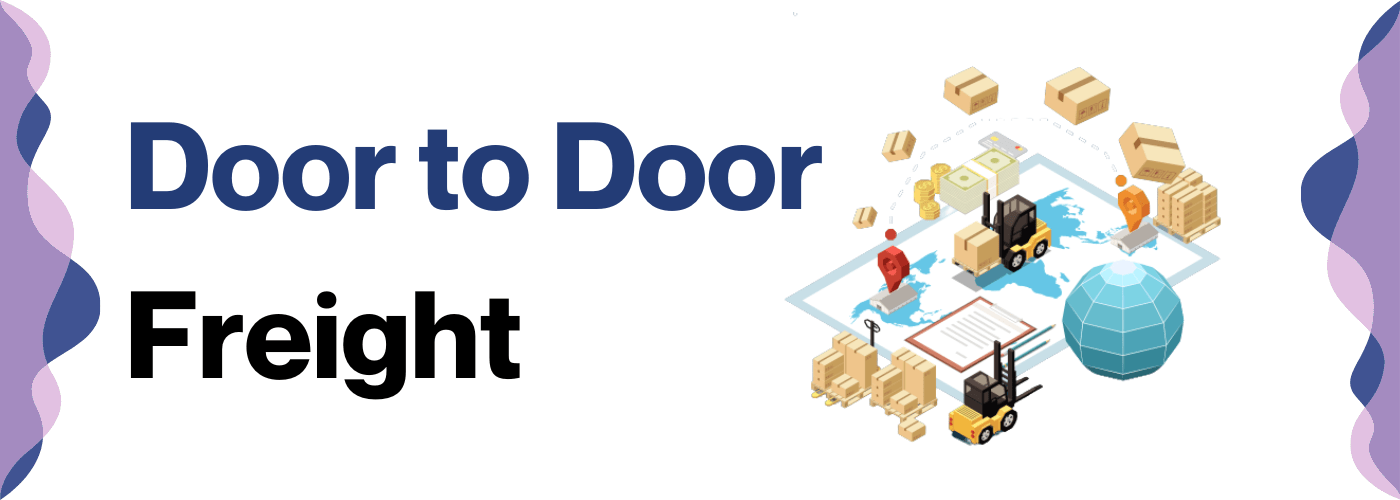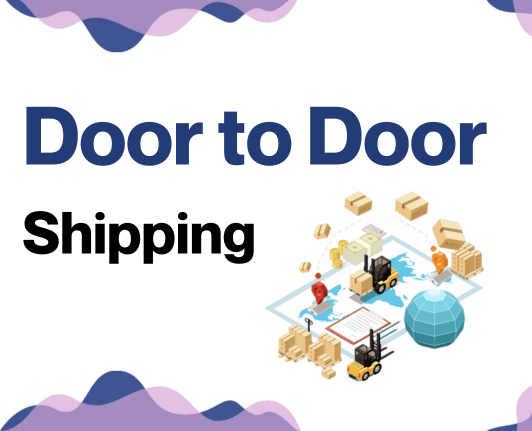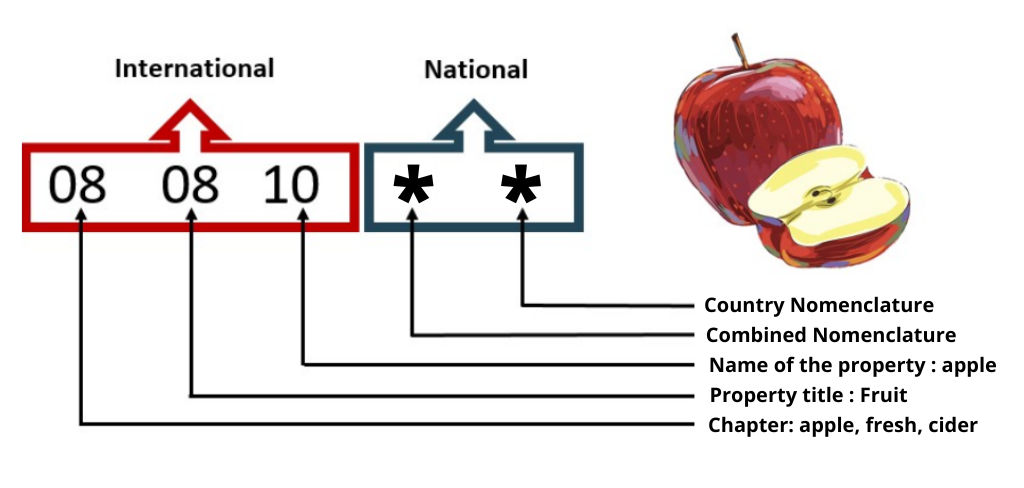Are you tired of playing 'Hide and Seek' with your freight? Jokes aside, the process of shipping goods from the US to Croatia can often seem like a confusing game, with issues such as understanding rates, transit times and customs regulations adding to the complexity. This destination guide is designed to transform your shipping experience by explaining everything from different types of freight options to customs clearance, duties, and taxes. Expect practical advice tailored for businesses and relevant insights that will empower you in your shipping efforts. If the process still feels overwhelming, let DocShipper handle it for you! As an international freight forwarder, we take care of every step of the shipping process, turning challenges into successes for businesses worldwide.
Table of Contents
ToggleWhich are the different modes of transportation between US and Croatia?
Choosing the perfect transport mode for shipments between the US and Croatia isn't a mere roll of the dice. Picture it as strategizing a cross-continental chess game; you've got your king-sized freight, but it's oceans away from its Croatian square. While road and rail stand as domestic champions, they're boxed in by the Atlantic. Hence, sea and air freight rise as your potent rooks. Each has its charm. Sea freight, slower but cost-effective, can handle hefty payload, while air freight, pricier but swifter, ensures expedited delivery. Turning your transport decision board, factor these elements to claim your successful shipping checkmate.
How can DocShipper help?
Taking the tension out of US-Croatia shipping, DocShipper stands tall! We deep-dive into transport organization, customs clearance, and administrative paperwork, no matter the shipping method. Got a query? Dial-up our advisors for a hassle-free discussion. For a swift, free estimate in under 24 hours – reach out now!
DocShipper Tip: Sea freight might be the best solution for you if:
- You are shipping large volumes or bulky items, as sea freight offers the most space at a cost-effective rate.
- Your cargo doesn't have an urgent deadline, as sea freight typically has longer transit times compared to air or rail.
- Your shipping routes are between major ports, allowing you to leverage the extensive global network of sea shipping lanes.
Sea freight between US and Croatia
Ocean shipping between the US and Croatia offers a cost-effective solution for transporting high-volume goods across the Atlantic. As bustling hubs of activity, renowned American ports like New York and Los Angeles directly connect with Croatian counterparts in Rijeka and Ploče, forming a lifeline that enables the thriving trade relationship between these two nations. Yet, journeying these seas isn't always smooth sailing. Businesses often stumble over customary hurdles such as choosing the wrong Incoterm or failing to correctly fill out customs declarations. Missteps like these can lead to costly delays and potential legal issues. But fear not. This section will demystify the art of shipping; consider it your compass rose in a sea of logistics. We'll chart a course through common errors and best practices, offering insights as solid as a sturdy ship's anchor to maintain steady and smooth sailing for your ocean-shipping endeavors. Sit tight as we delve into this crucial segment of international freight forwarding.
Main shipping ports in US
Port of Los Angeles
Location and Volume: Located in Los Angeles, California, the Port of Los Angeles is one of the busiest ports in the world, dealing with a shipping volume of over 9.3 million TEUs in 2020.
Key Trading Partners and Strategic Importance: The port's key trading partners comprise countries in East Asia, including China, Japan, and South Korea. The strategic importance of the Port of Los Angeles is amplified by its location, as it provides a crucial connection between the US and Asian markets.
Context for Businesses: If you're looking to expand into the Asian market, the Port of Los Angeles could be a critical part of your shipping strategy with its direct routes and high volume handling capabilities.
Port of Long Beach
Location and Volume: Situated adjacent to the Port of Los Angeles in California, the Port of Long Beach handled over 8.1 million in TEUs in 2020, marking it as the second busiest port in the US.
Key Trading Partners and Strategic Importance: The port trades predominantly with East Asia, with China standing as its largest trading partner. Its strategic location and modern facilities play a vital role in facilitating global trade.
Context for Businesses: The Port of Long Beach's extensive intermodal infrastructure and state-of-the-art green technologies make it a great choice, particularly for businesses committed to sustainable practices.
Port of New York and New Jersey
Location and Volume: Nestled on the East Coast, the Port of New York and New Jersey is the busiest port on the Eastern Seaboard. It oversees the flow of around 7.5 million TEUs annually.
Key Trading Partners and Strategic Importance: Its primary trading partners are China, India, and Germany. The port has immense strategic importance, given its proximity to the populous northeastern markets.
Context for Businesses: If your venture focuses on the local US market, this port could act as a major hub for distributing your goods due to its extensive rail and road links to the inner regions of the US.
Port of Savannah
Location and Volume: The Port of Savannah, located in the state of Georgia, is a rapidly growing port, moving over 4.6 million TEUs in 2020.
Key Trading Partners and Strategic Importance: The port has a diverse range of trading partners across Asia and Europe, most notably China. Its strategic importance lies in its status as the largest single-terminal container facility of its kind in North America.
Context for Businesses: The Port of Savannah offers a highly effective, seamless supply chain with direct on-terminal rail access and immediate interstate access, making it an excellent choice for businesses looking to capitalise on speed and efficiency.
Port of Houston
Location and Volume:The Port of Houston, based in Texas, is one of the busiest ports in America, handling approximately 2.99 million TEUs annually.
Key Trading Partners and Strategic Importance: The port predominantly trades with Mexico, China, and Brazil. Its strategic relevance is due to it being the largest Gulf Coast container port and a major link to Latin American markets.
Context for Businesses: If your business is looking to navigate the Latin American or Mexican market, the Port of Houston's extensive connections and amenities could make it an integral part of your logistics chain.
Port of Seattle
Location and Volume: Located in the Pacific Northwest, the Port of Seattle is known for handling around 3.5 million TEUs per year.
Key Trading Partners and Strategic Importance: Key trading partners include China, Japan, and South Korea. The Port of Seattle occupies a strategic place in the region for facilitating Northwest seaborne trade.
Context for Businesses: For businesses aiming to tap into the flourishing Northwest markets, the Port of Seattle, with its collaborative approach to environmental stewardship and innovation, can prove to be an optimal choice.
Main shipping ports in Croatia
Port of Rijeka
Location and Volume: The Port of Rijeka lies on the North Adriatic Sea, crucial for connecting Central and South Eastern Europe. With an annual shipping volume of 250,000 TEU, it's the busiest international port in Croatia.
Key Trading Partners and Strategic Importance: Significant trading partners include Italy, Germany, and Hungary. Its strategic location serves as a gateway for these nations' imports and exports.
Context for Businesses: If your business plan involves reaching the Central European market, Rijeka should be integral to your strategy thanks to its connectivity with these nations and its established intermodal transport options.
Port of Ploče
Location and Volume: The Port of Pločeis nestled on the Adriatic Sea near the mouth of the Neretva-Bosnia River. It’s one of the major seaports, handling around 5 million tons of cargo annually.
Key Trading Partners and Strategic Importance: Chief trading partners are Bosnia and Herzegovina, Hungary, and Austria. It is strategically significant for inland transportation to these countries.
Context for Businesses: If you're expanding your reach to Bosnia and Herzegovina, Hungary, and Austria, the Port of Ploče can be a key part of your logistics strategy, given its handling capacity and transit links.
Port of Split
Location and Volume: The Port of Split, nestled in the Eastern shore of the Adriatic Sea, handles approximately 4 million tons of cargo annually.
Key Trading Partners and Strategic Importance: It mainly serves Italy and Greece, providing critical ferry connections.
Context for Businesses: If you're expanding to Southern Europe, especially to Italy and Greece, the Port of Split stands as an essential part of your logistics strategy due to its regular ferry services and ability to handle a sizeable volume of cargo.
Port of Zadar
Location and Volume: The Port of Zadar is strategically located in North Dalmatia. It is a smaller port, serving over 3 million passengers and managing significant cargo operations annually.
Key Trading Partners and Strategic Importance: Its key trading partners are Italy, Slovenia, and Austria. It's a critical logistics hub for ferry lines and cargo in the region.
Context for Businesses: If your company aims to cater to passenger and cargo networks focusing on Western Europe, the Port of Zadar can be crucial to your operations, given its ferry connections and cargo handling capabilities.
Should I choose FCL or LCL when shipping between US and Croatia?
Confused about the best freight method between the US and Croatia? In the complex world of international shipping, choosing between Full Container Load (FCL) and Less than Container Load (LCL) could be a game-changer. Your choice impacts cost, delivery time, and ultimately, the success of your shipment. This section will dive into the pros and cons of each, helping you make an informed decision that aligns with your business’s unique shipping needs. Buckle up, we're about to demystify the world of sea freight for you.
LCL: Less than Container Load
Definition: LCL (Less than Container Load) shipping refers to a method of shipping where multiple shippers share the space in a single container. Each pays only for the room they use, which makes it a cost-effective solution for transporting smaller volumes of goods.
When to Use: LCL is the ideal choice when your cargo is less than 13/14/15 cubic meters. This option is flexible for low-volume shipping needs and helps save on costs if you're not shipping a large quantity.
Example: Imagine a small business owner who sources boutique wine from Croatia for sale in a niche US market. Instead of waiting to accumulate enough stock for a full container or paying for unused space, they can use LCL shipping to regularly transport smaller batches, ensuring product freshness and improved cash flow.
Cost Implications: While the cost per cubic meter may be higher in LCL compared to FCL (Full Container Load), this is outweighed by the savings made on not having to pay for unused space. So, for shipments below the 15 cubic meters threshold, LCL freight is generally more cost-effective. Moreover, with LCL shipment, you're also likely to have reduced warehousing costs, aiding further in price reduction.
FCL: Full Container Load
Definition:FCL shipping, or Full Container Load, is when a shipper rents the entire space of the container, typically a 20'ft or 40'ft container, for THEIR cargo. Here, you’re in full control of the fcl container and its contents from origin to destination, enhancing its safety.
When to Use:FCL is your go-to option when your cargo exceeds 13/14/15 CBM. This shipping option is particularly cost-effective for larger volumes, since you utilize the whole container. Additionally, it provides an extra layer of security as your cargo isn't mixed with other shippers' goods.
Example:Consider an auto parts manufacturer shipping heavy machinery parts from New York to Dubrovnik. Due to high volume, they opted for a 40'ft FCL shipping, thus ensuring the safety of THEIR shipment, reducing the risk of damages, and making the transport more financially feasible.
Cost Implications:While the upfront fcl shipping quote might appear high due to the volume-based pricing, you actually save more when you consider the cost-per-unit. That means, the more goods you ship, the cheaper it becomes. If your cargo is substantial enough to fill a container, the price per unit is generally lower compared to LCL or other shipping options.
Unlock hassle-free shipping
As your freight forwarder partner, DocShipper is committed to making the complexities of cargo shipping feel like a breeze, especially between the US and Croatia. Our seasoned ocean freight experts are always on hand to guide your decision, taking into consideration crucial factors like volume, frequency, and destination of your shipment. Unsure of choosing consolidation or a full container service? Let us help you make the best choice. Reach out to us today for your free, no-obligation freight estimation.
How long does sea freight take between US and Croatia?
Shipping sea freight between the US and Croatia takes an average of 30 - 60 days, though it's essential to remember that these transit times can vary. Factors including specific ports used, the weight of your shipment, and the nature of the goods you're transporting can alter this timeline significantly. For a more precise and tailored quote based on your specific needs, we recommend consulting with a freight forwarder like DocShipper.
In the text-based table below, we've outlined the average transit times between the four main freight ports in the US and Croatia. Do keep in mind that these are estimates, and actual times may vary:
| US Ports | Croatian Ports | Average Transit Time (Days) |
| Port of Los Angeles | Port of Rijeka | 30 |
| Port of New York | Port of Ploče | 25 |
| Port of Houston | Port of Zadar | 35 |
| Port of Savannah | Port of Split | 30 |
*Please reach out to a knowledgeable freight forwarder to give you a more exact estimate based on your unique requirements.
How much does it cost to ship a container between US and Croatia?
Pinning down an exact figure for shipping a container between the US and Croatia isn't cut-and-dry—ocean freight rates can shimmy anywhere between a broad spectrum. Variables like the Point of Loading, Destination, carrier used, nature of goods, and even monthly market swings can mean your individual shipping cost scoots up or down that range. But rest assured, our skilled shipping specialists are industry wizards, dedicated to quote-tailoring. We dig deep to find you the best rates, examining your specific needs on a case-by-case basis. With us at the helm, you get insightful, bespoke shipping assistance, without breaking the bank!
Special transportation services
Out of Gauge (OOG) Container
Definition: OOG containers are non-standard sized containers designed to carry cargo that doesn't fit into regular containers (either in size or weight). Out of gauge cargo is any cargo that extends beyond the standard container dimensions.
Suitable for: Construction equipment, machineries, of any massive, heavy item that exceeds normal container dimensions.
Examples: Imagine you have a large piece of machinery, such as a crane boom, that exceeds the dimensions of standard containers. In this case, you would use an OOG container.
Why it might be the best choice for you: Choosing an OOG container would minimize the risk of damaging your oversized goods and would offer a flexible solution for transporting your non-standard sized items safely.
Break Bulk
Definition: Break bulk is a shipping method where goods are individually, box, or unitized for shipment rather than being loaded inside a container. The shipping term break bulk comes from the phrase breaking bulk, which means extracting a portion of the cargo on a ship or distributing a part of the cargo amongst various shippers.
Suitable for: Sizable, heavy items that cannot be shipped using conventional shipping containers.
Examples: If you need to ship items like steel girders or huge reams of paper, break bulk would be the way to go.
Why it might be the best choice for you: Break bulk can be a more efficient way of shipping if you have large goods that aren't container-friendly, as it allows for greater flexibility in how your goods are transported.
Dry Bulk
Definition: Dry bulk refers to the transportation of homogeneous commodities in large quantities in individual segments of the cargo space of a ship (the holds), filled and discharged one by one - also known as loose cargo load.
Suitable for: Products such as minerals, grains, or coal.
Examples: Suppose you're exporting large amounts of grain from the US to Croatia. Using dry bulk shipping would be the most suitable mode for such large quantities.
Why it might be the best choice for you: It allows for easy and efficient loading and unloading of large amounts of homogeneous goods, freeing you from the necessity to pack and unpack the goods.
Roll-on/Roll-off (Ro-Ro)
Definition: Ro-ro is a type of ship where vehicles can be driven directly on and off, using their own wheels or using a mobile platform. The ro-ro vessel can accommodate wheeled cargo such as cars, trucks, semi-trailer trucks, trailers, and railroad cars.
Suitable for: If you're shipping any kind of wheeled cargo or vehicles.
Examples: If you're exporting cars from the US to Croatia, using a ro-ro vessel would be ideal since the vehicles can be driven on and off the ship.
Why it might be the best choice for you: It reduces the need for cranes and other equipment for loading and unloading, and it's one of the safest, quickest, and most cost-effective methods of shipping vehicles.
Reefer Containers
Definition: Reefer containers are refrigerated containers used for transporting goods that are temperature-sensitive and need to be kept at a certain temperature throughout the journey.
Suitable for: Fresh produce, pharmaceuticals, and other perishable goods.
Examples: If you're shipping freshly caught fish from the USA to restaurants in Croatia, reefer containers would keep the fish at the perfect temperature throughout its journey, ensuring that it arrives fresh.
Why it might be the best choice for you: These containers ensure that your perishable or temperature sensitive goods maintain their quality throughout the transit, eliminating the risk of goods being spoiled due to temperature fluctuations.
If you're in need of further assistance or wish to understand which of these shipping methods is best for your business requirements, DocShipper invites you to contact us for a free shipping quote. Our dedicated team will provide you with a tailor-made solution in less than 24h for your shipping between the US and Croatia.
DocShipper Tip: Air freight might be the best solution for you if:
- You are in a hurry or have a strict deadline requirement, as air freight offers the fastest transit times.
- Your cargo is less than 2 CBM (Cubic Meter), making it more suitable for smaller shipments.
- Your shipment needs to reach a destination that is not easily accessible by sea or rail, allowing you to tap into the extensive network of global airports.
Air freight between US and Croatia
Traveling from coast to coast, Miami to Zagreb, air freight is your trusty express pass for small, high-value shipments. Imagine it as your shipping Superman: fast, reliable, and more cost-effective than you think. Bose headphones, Apple iPhones, or rare vintage wines - these high-ticket items feel right at home on a plane.
However, much like booking a spontaneous holiday trip, mistakes in air freight are common and costly. Like misjudging the weight of your suitcase and coughing up excess fees, many shippers neglect to use the right weight formula for their goods. Stay tuned as we delve into these common pitfalls and share insider tips on how to avoid them.
Air Cargo vs Express Air Freight: How should I ship?
When considering transporting goods between the US and Croatia, the choice can boil down to air cargo, the steady and possibly more affordable boarder on an airline, or express air freight, the speedy globe-trotter on its dedicated plane. Tailored to suit your unique business needs, we'll delve into their differences, helping you determine the ideal way to wing your goods across the Atlantic.
Should I choose Air Cargo between US and Croatia?
Selecting air cargo for shipping goods between the US and Croatia could be a perfect fit for businesses emphasizing cost-effectiveness and reliability. This method becomes more attractive when your cargo exceeds 100/150 kg (220/330 lbs). Consider carriers such as Delta Air Lines or Croatia Airlines known for their good service in freight delivery. Be aware, however, of longer transit times due to fixed schedules. Careful planning can help offset these constraints and achieve a smooth and affordable shipping process.
Should I choose Express Air Freight between US and Croatia?
Express air freight, a niche service employing cargo-only aircraft, is your jackpot for transporting cargo under 1 CBM or 100/150 kg. As it’s typically faster than other options, urgent or small-scale consignments are ideal for this mode. Major courier firms such as FedEx, UPS, and DHL lead the industry in this sector. If you're shipping light, high-priority goods from the US to Croatia, consider this method. It offers you quick turnaround, tracking, and door-to-door delivery, trimming the edges for seamless, prompt supply to your clients.
Main international airports in US
Los Angeles International Airport
Cargo Volume: With an average of 2.4 million tons of cargo handled annually, it's one of the busiest in the U.S.
Key Trading Partners: Majorly deals with Asia, Europe, and South America.
Strategic Importance: Strategically located on the West Coast, acting as a point of entry and exit for flights to and from Asia and Oceania.
Notable Features: Accommodates all types of freight and offers specialized facilities like temperature-controlled warehouses for perishable goods.
For Your Business: If you're shipping perishable goods or dealing with key Asian markets, considering this airport could boost the efficiency of your supply chain.
Chicago O’Hare International Airport
Cargo Volume: Handles around 1.9 million tons of cargo annually.
Key Trading Partners: Strong trade links with Europe and Asia, particularly China and Germany.
Strategic Importance: Situated in the heart of the country, ideal for domestic and international transit.
Notable Features: Offers several logistics and supply chain services, including customs clearance facilities.
For Your Business: If your business operations require efficient customs clearance and central location for national distribution, this airport is worth considering.
John F. Kennedy International Airport
Cargo Volume: Manages over a million tons of cargo per year.
Key Trading Partners: Strong trade connections with Europe, Asia, and South America.
Strategic Importance: Located in New York, a major international financial and cultural hub.
Notable Features: It's equipped with advanced cargo handling facilities and offers specialized storage solutions.
For Your Business: If your goods require special handling or storage, JFK's advanced amenities might provide the solution you need.
Miami International Airport
Cargo Volume: Handles more than 2.1 million tons of cargo every year.
Key Trading Partners: Predominantly linked with Latin American and European markets.
Strategic Importance: Positioned as the gateway to the Americas, excellent for facilitation of trade with Latin American markets.
Notable Features: Known for its expertise in handling perishable goods, especially flowers and seafood.
For Your Business: If your business copes with perishable goods and aims to reach Latin American markets, this would be an ideal hub.
Memphis International Airport
Cargo Volume: Handles around 4.5 million tons of cargo annually, making it the busiest cargo airport in North America.
Key Trading Partners: Major partnerships with North American and Asian markets.
Strategic Importance: It is the global SuperHub of FedEx Express, which makes it important for transcontinental and intercontinental shipments.
Notable Features: Around the clock operational facilities given its status as a superhub.
For Your Business: If your business requires heavy intercontinental shipping, using Memphis International would greatly benefit your logistics operations.
Main international airports in Croatia
Zagreb Airport
Cargo Volume:Zagreb Airport handled approximately 13,000 tonnes of cargo in 2019.
Key Trading Partners:Major trading partners include Germany, Italy, Slovenia, Austria, and Bosnia and Herzegovina. There's also a growing trade relationship with China and Middle Eastern countries.
Strategic Importance:As the largest and busiest airport in Croatia, Zagreb Airport plays a crucial role in the country’s logistics infrastructure. Its central location, serving as a hub for Croatia Airlines, makes it particularly important for national and international cargo flows.
Notable Features:Besides regular cargo services, the airport boasts a high-tech cargo terminal with a capacity of 100,000 tonnes annually, making it ideal for businesses with large shipment volumes. It also handles a wide variety of goods, including perishable and sensitive goods.
For Your Business:If your business frequently ships to Central and Eastern Europe, Zagreb Airport is a potential touchpoint for your supply chain that's been tried and tested, especially for businesses dealing with high volume and/or delicate shipments.
SPLIT Airport
Cargo Volume:In 2019, Split Airport handled over 236 tonnes of cargo.
Key Trading Partners:Key trading partners include Italy, Germany, Bosnia and Herzegovina, and Austria.
Strategic Importance:Split Airport is the second largest in Croatia and crucial for servicing the Dalmatian coast area. While it primarily serves tourist traffic, cargo trade has been growing.
Notable Features:The airport's recently-constructed passenger and cargo terminal allows for increased cargo handling capacity.
For Your Business:Shipping through Split Airport could be a strategic choice if your business operates in and targets the Adriatic markets.
PULA Airport
Cargo Volume:Although the figures fluctuate, Pula Airport handled approximately 50 tonnes of cargo in 2019.
Key Trading Partners:Italy, Bosnia and Herzegovina, Austria, and Germany are the key trading partners.
Strategic Importance:Located on the Istrian Peninsula, Pula Airport serves as a regional hub. Its location provides easy access to Northern Italy and Central Europe.
Notable Features:While Pula Airport is smaller and serves fewer flights, it offers an array of facilities that cater to cargo transport, including a dedicated area for cargo services.
For Your Business:If convenience and quick access to Central European markets is crucial for your supply chain, then Pula Airport offers potential opportunities.
How long does air freight take between US and Croatia?
The average shipping duration from the US to Croatia by air freight typically ranges from 6 to 8 days. However, the exact transit time can fluctuate depending on several key factors. Variations in specific departure and arrival airports, the weight of your consignment, as well as the nature of the goods being shipped, all contribute to potential changes in shipping duration. For a more accurate estimation tailored to your specific circumstances, consider consulting a professional freight forwarder like DocShipper.
How much does it cost to ship a parcel between US and Croatia with air freight?
Air freight costs between the US and Croatia range widely from approximately $2 to $10 per kilogram. It's challenging to provide an exact price upfront due to variables such as airport distances, parcel dimensions, weight, and type of goods. Rest assured, our seasoned team is committed to tailor the best rates suited to your specific shipping needs, providing quotes on a case-to-case basis. Want to find out more? Contact us and receive a personalized, free quote within 24 hours.
What is the difference between volumetric and gross weight?
Gross weight refers to the total weight of your shipment, including the goods and any packaging materials. On the other hand, volumetric weight represents the total space a package takes up on a freight vehicle, considering its overall size rather than the actual weight.
In air cargo, gross weight is straightforward, measured in kilograms (kg) on a scale. Volumetric weight, however, is calculated by measuring the three dimensions of a shipment (height, length, and width) in centimeters (cm), and then multiplying these three measurements and dividing by 6000. The result is the volumetric weight in kilograms (kg).
To illustrate, imagine shipping a box measuring 100 cm by 100 cm by 100 cm. The volumetric weight is (100100100) / 6000, resulting in 166.6 kg. In pounds, that's roughly 367 lbs.
In Express Air Freight services, the calculation mechanism is similar to air cargo only the divisor changes from 6000 to 5000. Let's use the same box for this example. The volumetric weight is (100100100) / 5000, resulting in 200 kg or approximately 441 lbs.
These calculations matter for an essential reason. Freight charges don't only consider the actual weight of your shipment. The transportation space your package occupies is equally pertinent. Carriers charge based on the higher of the two weights - gross weight or volumetric weight. This method ensures cost-efficiency for air freight services, pushing shippers to optimize their packaging. Be mindful of these factors when organizing your next international shipment to manage costs effectively.
DocShipper tip: Door to Door might be the best solution for you if:
- You value convenience and want a seamless shipping process, as door-to-door takes care of every step from pickup to delivery.
- You prefer a single point of contact, as door-to-door services typically provide a dedicated agent to handle all aspects of the shipment.
- You want to minimize the handling of your goods, reducing the risk of damage or loss, as door-to-door minimizes transitions between different modes of transport.
Door to door between US and Croatia
International door-to-door shipping is your hassle-free solution for sending goods from the U.S. to Croatia. It incorporates every step of the process, from pick-up at your doorstep to delivery at your chosen destination. It's uncomplicated, time-efficient, and avoids the fuss of dealing with multiple agencies. Curious? Let's dive in and explore how it can fuel your business expansion.
Overview – Door to Door
Embarking on a shipping journey between the US and Croatia? Here's a stress-free logistics solution just for you - Door to Door shipping. It's top-rated by DocShipper's clients and here's why: this comprehensive service handles all the intricacies, from customs clearance to home delivery. It minimizes your shipping challenges, resolves complexities, and saves you valuable time. However, be prepared for potentially higher costs due to the premium service, and unexpected delays in customs. So let us sail through the shipping process together, making it easier, efficient, and worry-free! Ready to uncover your easiest shipping solution between the US and Croatia?
Why should I use a Door to Door service between US and Croatia?
Ever tried juggling flaming torches while walking on a tightrope? Yeah, international freight shipping can feel a bit like that, but not if you choose Door to Door service between the US and Croatia. The question is why. Let's dive in:
1. Ease of Logistics: It's an all-in-one package! The service picks up your goods right at your doorstep in the US and handles the entire transportation till the last mile in Croatia. No more dealing with multiple entities. Boom, stress evaporated!
2. Timely Delivery: Every second counts in international shipping, and a Door to Door service can be your knight in shining armor when deadlines are tight. No delays due to transfer among carriers and a streamlined process equals to your shipment arriving just in time to save the day.
3. Special Care for Complex Cargo: If you're shipping fragile or high-value cargo, Door to Door service can take a special watch over your goods. With fewer handoffs and direct responsibility, your shipment reaches the destination unscathed.
4. End-to-End Trucking: Don't let terms like 'EXW' or 'DDP' send you scurrying for a logistics glossary. Door to Door service undertakes the full spectrum of trucking duties, from US pick-up to Croatia delivery.
5. Convenience: Topping it all is the sheer convenience. You hold one contract, have one contact point, and face no hidden surprises. It's like creating a playlist of your favorite logistics solutions where every track is a hit!
In essence, Door to Door service between the US and Croatia gives you the freedom to focus on your core business, leaving the logistics juggling to the experts. Now that's a lifesaver, isn't it?
DocShipper – Door to Door specialist between US and Croatia
Experience stress-free door-to-door shipping between the US and Croatia, handled by DocShipper's skilled team. We take care of it all, packing, transport, customs clearance, across all shipping methods. Rest easy knowing everything is managed proficiently for you, with a dedicated Account Executive supporting your every need. Get in touch for a prompt, free estimate within 24 hours or consult our knowledgeable advisors for free advice. Keep your shipping worries at bay with DocShipper's comprehensive services.
Customs clearance in Croatia for goods imported from US
Customs clearance is a critical process that ensures import regulations are fulfilled while delivering goods from the US to Croatia. This multifaceted process, if misunderstood, can lead to unexpected challenges including surprise tariffs and potential bottlenecks causing goods to be held in customs. Thorough comprehension of customs duties, taxes, quotas, and licenses is paramount to avoid such setbacks. Fear not; we'll delve deeper into these topics shortly. DocShipper stands ready to assist you throughout this process, catering to all types of goods worldwide. Need an estimate for your project? Just provide the origin of your goods, their value, and the HS code. These snippets of information are essential to move ahead with an accurate cost estimate. So let's embark on this journey together, making international shipping a breeze, rather than a puzzle.
How to calculate duties & taxes when importing from US to Croatia?
Understanding how to calculate customs duties when importing from the US to Croatia might seem like a challenging task, but with the right insights, it becomes manageable. Essentially, the key variables affecting your duties and taxes include the country of origin, the Harmonized System (HS) code of your goods, the customs value, the applicable tariff rate, and any additional taxes and fees that may apply to your products.
One crucial initial step in this process is to identify the exact place where your goods were manufactured or produced. Knowing this is fundamental as it sets the basis for determining tariffs and other charges in the subsequent steps of your import process. Remember, getting the country of origin right is a primary factor in ensuring a smooth and efficient shipping experience.
Step 1 - Identify the Country of Origin
Identifying the country of origin, in this case, the United States, is your first crucial step. Here are the top five reasons why:
1. Custom Tariffs: The tariffs can vary based on where the goods originate, influencing the total cost of your shipment.
2. Trade Agreements: The US and Croatia have an updated trade agreement which can impact your final customs duties.
3. Compliance Laws: Following global trade protocols is easier when you know where the products are coming from.
4. Import Restrictions: Some items are restricted from the US. Scoping these out can save significant hassle.
5. Economic Sanctions: Import sanctions can affect your shipment, so it's vital to know the origin country.
Considering the trade agreements, the US-Croatia Trade Agreement can offer benefits like duty reductions for various types of goods. However, to enjoy these perks, the goods must 'originate' in either country according to the agreement's rules of origin.
Each product has different import restrictions. Check the Customs Administration of Croatia's website for a comprehensive list to avoid potential roadblocks. Remember, success lies in the details when importing goods and paying customs duties. Do your research, take your time, and contact us if in doubt - we've got your back!
Step 2 - Find the HS Code of your product
The Harmonized System (HS) code is a standardized system of names and numbers to classify traded products globally. It is used by customs authorities worldwide for duties and taxes, and having the correct code allows you to quickly and accurately calculate the export costs.
Getting the HS code from your supplier is typically the easiest way to find it. They’re usually familiar with the goods they are handling and are aware of the associated regulations.
If obtaining the HS code from your supplier isn’t possible, you can find it yourself with a simple step-by-step process. Start by using an HS lookup tool like this one: Harmonized Tariff Schedule. Then, type the name of your product into the search bar. The Search Results will display your HS code in the Heading/Subheading column.
It's crucial to note though, accuracy in selecting your HS Code could quite literally make or break your shipment process. An incorrect code could result in unfortunate delays, additional costs, or even potential legal penalties.
With that in mind, here's an infographic detailing exactly how to read an HS code. Knowing this can provide you with extra confidence when dealing with international shipping logistics.
Step 3 - Calculate the Customs Value
At first glance, you might think your product value and customs value are the same - but there's a distinction. Think of the customs value as your product value, all dressed up and ready for its trip! It's actually the CFR (Cost, Freight, and Insurance), which includes the product price, shipping cost, and insurance - or simply, the total international cost of your goods.
Let's break it down with a hypothetical scenario. Say you're shipping a batch of custom furniture from the US to Croatia costing $5000 in value. To ship these across the sea, you're billed $1500, with a $200 insurance cost. The customs value used for clearance isn't the original $5000, but the sum of all three ($5000 + $1500 + $200), equaling $6700. By properly calculating your customs value, you can avoid surprises and ensure smooth sailing at every checkpoint.
Step 4 - Figure out the applicable Import Tariff
An import tariff primarily serves as a tax imposed on goods crossing the borders of a country. For goods transported from the US to Croatia, which is part of the European Union, import tariffs are typically determined by the 'Common Customs Tariff' of the EU.
To find the tariffs applicable to your goods, utilize the TARIC System - European Customs. Therein, put in the Harmonized System (HS) code recognized beforehand and the country of origin. Consequently, you'll access details on the duties and taxes imposed on your product.
As an example, a business planning to import electric bicycles from the US would use the HS code 8711.60. This code pertains to electrically power-assisted cycles (EPAC). From this, you might get an ad-valorem duty rate of 6%.
Say, for instance, your CIF (Cost, Insurance, Freight) is $200. Ultimately, you would calculate the import duties as follows:
Import duties = CIF value x Duty rate
Import duties = $200 x 0.06
Thus, the import duties would amount to $12.
Understanding the import tariff system and adeptly calculating your costs can aid in obtaining a clear projection of your product's final landed cost, and thus secure a robust financial plan for your import business.
Step 5 - Consider other Import Duties and Taxes
In shipping to Croatia from the US, you'll encounter more than just the standard tariff rates. These charges usually fluctuate based on the product's nature and the country of origin. Let's unravel this financial tangle.
Take Excise Duty, for instance. Say you’re importing luxury items like tobacco or alcohol; they can attract this tax. It can vary greatly; for argument's sake, let's work with an excise rate of 10%.
Anti-dumping taxes may also come into play if goods are sold at an unfairly low price. While this is an infrequent situation, it's good to have on your radar. As a hypothetical scenario, the rate might be something like 5%.
Now, the one you'll see most often: VAT. Croatia's standard VAT rate sits at 25%. It's essential to include the Value Added Tax estimation in your budget since it can considerably influence your total import cost.
For better understanding, let's deploy it in a formula:
(Customs Value + Round figure(Excise Duty) + Round figure(Anti-dumping Tax))VAT%
Please remember, these are mere examples and real rates can vary. Consulting with a local freight forwarder can help you get accurate duties and taxes. Always prepare for these possible extra costs to avoid negative impacts on your bottom line.
Step 6 - Calculate the Customs Duties
Step 6 delves into the complex world of calculating customs duties for imports from the US to Croatia. The duty is a percentage of the customs value of the goods, also known as the CIF value (Cost, Insurance, and Freight). For instance, consider a shipment with a customs value of $1000 and a duty rate of 5%. Your calculated customs duty would be $50. However, it's critical to remember there might be VAT (Value Added Tax) and anti-dumping taxes in addition to customs duties.
For example, if your customs value is $1000, and Croatia applies a 25% VAT, the additional cost would be $250. In cases with anti-dumping taxes, like a steel shipment subject to a 5% anti-dumping tax, the additional charge would be $50.
Even more complex scenarios involving Excise Duty illustrate the intricacies of customs calculations. Imagine your goods attract a customs duty of $50, a 25% VAT ($250), a 5% anti-dumping tax ($50), and an Excise Duty of 15% ($150). You'd end up paying $500 in total.
Navigating these calculations can be tricky, but DocShipper’s customs clearance services are designed to remove this complexity. We ensure you won't be overcharged and handle all the processes worldwide. You can rely on our expertise. Contact us today for a free quote within 24h. With us, customs doesn't have to be a hurdle.
Does DocShipper charge customs fees?
While DocShipper is your customs broker in both the US and Croatia, we don't collect customs duties. Instead, we charge for customs clearance services. The duties and taxes you pay go directly to the government. Rest assured, you'll receive official customs office documents as proof that you've only been billed for actual charges. Imagine getting a detailed itemized receipt after a restaurant meal – it's that transparent. Or think of us as the postman delivering a tax bill; we handle the delivery, but we don't set the charges. This ensures you avoid unexpected expense surprises.
Contact Details for Customs Authorities
US Customs
Official name: U.S. Customs and Border Protection (CBP)
Official website: https://www.cbp.gov/
Croatia Customs
Official name: Customs Administration of the Republic of Croatia
Official website: https://carina.gov.hr/
Required documents for customs clearance
Tackling customs clearance? Let's demystify it. This section breaks down mandatory documents, including the Bill of Lading, Packing List, Certificate of Origin, and Documents of Conformity (CE standard). With these at your fingertips, you can stay afloat in the sea of international shipping. The goal? Simplifying your freight journey, each step of the way.
Bill of Lading
If you're shipping goods between the US and Croatia, a pivotal document you can't overlook is the Bill of Lading (BoL). Acting as the passport for your cargo, the BoL signifies the transfer of ownership, almost like a green light for your goods to embark on their journey. If time is not on your side, the telex release is a great digital alternative. This electronic version of the BoL facilitates a smoother, quicker clearance process - think of it like the fast lane at customs. For those choosing air freight, the AWB (Airway Bill) holds the key to your cargo’s voyage. In a nutshell, ensure you have your BoL or AWB in order for your goods to sail the international commerce seas smoothly and efficiently.
Packing List
In the realm of international shipping, your Packing List is an absolute lifeline. It's let's say, your shipment's ID, detailing what, how much, and how items are packed. When sending goods from the US to Croatia, whether by sea or air, this document is indispensable. Imagine you're a Croatian customs agent. Without a Packing List, you're untangling a huge mystery box from the States. Consequently, it is the shipper's job to compile the Packing List, with utmost precision. Remember, any inaccuracies can escalate to unnecessary hold-ups or, worse, fines. Think, getting hit with a penalty because your description of those 50 auto parts skimmed on details. Hard-earned profits can evaporate just like that! Your attention to the Packing List is your first step in shaping a smooth shipping experience.
Commercial Invoice
A Commercial Invoice is your ticket to smooth customs clearance when shipping from the US to Croatia. It's more than a simple list of goods – it's the itemized declaration of your shipment's value. It should match perfectly with your Bill of Lading or Air Waybill. Customs officers use this document to calculate duties, so accuracy is essential. Here's a tip: make sure your invoice includes specifics such as the buyer and seller details, description of goods, quantity, value, and the Harmonized System (HS) codes for each item. Misalignment or omissions of details can cause delays and extra costs. Your goal? Achieve a frictionless shipping process by keeping your Commercial Invoice clear, accurate, and aligned. Remember, a well-prepared invoice is an investment in your delivery timeline.
Certificate of Origin
Navigating customs between the US and Croatia is no small task, and your Certificate of Origin (CO) is a crucial companion. Acting like a passport for your goods, the CO authenticates the birthplace of your products. Imagine you're shipping widgets made in Austin to Zagreb. By mentioning the country of manufacture on your CO, it's clear your widgets are made in the USA. Count this as one of your secret weapons, as it often unlocks preferential duty rates, lowering your shipping costs significantly—sounds like a win, right? Remember, getting customs clearance without a hitch hinges on your careful attention to this key document, the CO and the accuracy of the details you provide. That road from Austin to Zagreb just got a bit smoother.
Certificate of Conformity (CE standard)
Navigating customs requirements can seem like a journey itself when shipping goods from the US to Croatia. Meet your 'Certification of Conformity,' a trusted companion in that journey. This document acts as proof that your products meet the CE standard, a regulatory muster-pass in the European market. Unlike quality assurance, which is internally focused and varies greatly, the CE standard is an external regulatory benchmark for product safety. Without it, your products might be stopped at Croatian customs faster than you can say 'dobar dan!' It's akin to the FCC Declaration of Conformity in the US. Therefore, ensuring your goods have a Certificate of Conformity before shipping can be quite the time-saver. So, be proactive, not reactive, and sail smoothly through the customs process.
Your EORI number (Economic Operator Registration Identification)
Sending goods from the US to Croatia? Don't forget your EORI number. This exclusive identification number is crucial as it simplifies tracking imports and exports within the EU. Yes, Croatia is part of the EU, and an EORI number is a must-have. It uniquely identifies your business (or you, as an individual) involved in the shipping process. The registration process is as simple as A-B-C. Just apply through your country's customs website, and you're set! Remember, each shipment without an EORI number is like a ship without a compass, lost in the vast sea of international trade. So, don't leave yours behind!
Get Started with DocShipper
Tired of navigating through complex customs procedures between the US and Croatia? Let DocShipper be your guide! Our experts handle every step of the customs clearance, saving you time and preventing costly mistakes. Ready for a smoother shipping experience? Get in touch for a free quote that'll arrive in less than 24 hours. Ship smarter with DocShipper.
Prohibited and Restricted items when importing into Croatia
Avoid the fuss of unknowingly shipping non-compliant items to Croatia. It's crucial to be familiar with the unique list of items not permitted or subject to regulations. This information will help you bypass potential hurdles, saving time and avoiding unnecessary costs. It's all about better planning for smoother deliveries.
Restricted Products
Pharmaceuticals and Medicines: You've to obtain an import license from the Croatian Agency for Medicinal Products and Medical Devices (HALMED).
Agricultural Products: For food and agricultural goods, you have to secure permits from the Ministry of Agriculture, Fisheries and Rural Development of Croatia (MAFRD).
Live Animals and Animal Products: These require an Animal Health Certificate from the Veterinary and Food Safety Directorate of Croatia (VFSD).
Fire Arms and Ammunition: Before importing these items, you're required to get a special permit from the Ministry of the Interior (MOI).
Radioactive Substances: You are required to get a permit from the State Office for Nuclear Safety (SONS).
Cultural Goods, Art, and Antiques: These require an Export/Import Permit from the Ministry of Culture and Media of Croatia (MCM).
Remember, getting a license or permits for the above-mentioned items requires you to heed to specific regulations set by the Croatian government. It's your responsibility to ensure you're not breaking any laws when purchasing/importing these goods from outside the country.
Prohibited products
- Narcotics and illegal substances
- Counterfeit currency and goods
- Arms and ammunition without special permissions
- Radioactive materials
- Obscene and offensive material
- Live animals without proper permits
- Plants without proper phytosanitary certificates
- Items older than 50 years (considered national heritage)
- Rough diamonds (as per Kimberly Process Certification Requirement)
- Powder and granulated forms of plastic explosives for non-industrial use.
Are there any trade agreements between US and Croatia
Yes, a significant Trade and Investment Framework Agreement (TIFA) exists between the US and Croatia, providing a platform for resolving trade issues and promoting greater commerce. Despite no Free Trade Agreement (FTA) or Economic Partnership Agreement (EPA), ongoing discussions focus on enhancing these trade relationships. Active involvement of key trade associations and major infrastructure initiatives indicate brighter prospects for future shipping partnerships. Also, being European Union (EU) members, Croatian businesses can leverage the US-EU partnered projects to their advantage.
US - Croatia trade and economic relationship
With roots dating back to Croatia's independence in 1991, the US-Croatian trade relationship has grown significantly, beginning with efforts to stabilize and transition Croatia into an open-market economy. As time unfolded, various milestones solidified their ties—like Croatia's NATO accession in 2009 and EU membership in 2013—which opened new commercial opportunities. Today, key sectors include IT services, tourism, maritime infrastructure, and energy.
In 2022, the United States experienced significant net trade with Croatia, primarily in the export categories of Mineral Products valued at $2.85 billion, Transportation at $82.2 million, and Machines at $46.2 million. Conversely, Croatia had substantial net trade with the United States in 2022, particularly in the export sectors of Chemical Products totaling $215 million, Machines amounting to $210 million, and Weapons valued at $122 million.
Your Next Step with DocShipper
Facing the complexities of international shipping between the US and Croatia? Aspire to trade confidently while complying with intricate customs regulations? Let Docshipper streamline your freight forwarding endeavor. Our specialized team handles it all: air, sea, rail, and road transport, simplifying customs clearance and administrative burdens for your peace of mind. Ready for a hassle-free shipping experience? Reach out to us today!
Additional logistics services
Explore DocShipper's extensive logistic offerings tailored to your supply chain's unique needs, journey beyond just shipping and customs, to a holistic, fuss-free logistics solution.
Warehousing and storage
Struggling to find a reliable warehouse in Croatia or the US? Conditions like temperature control are vital, especially for delicate goods like wine or pharma products. Imagine storing your fine Croatian wine in a subpar facility! To prevent such nightmares, check more details at our dedicated page: Warehousing.
Packaging and repackaging
When shipping from the US to Croatia, proper packaging is crucial to prevent any damage to your products. A reliable agent can assist with repackaging items to meet varying needs – whether you’re shipping fragile porcelain pieces or bulky industrial machinery.
Cargo insurance
Cargo insurance, unlike fire insurance, specifically safeguards your shipment during transport. It's all about securing your interests amidst unpredictable conditions. Consider, if your goods were damaged in a storm at sea, fire insurance wouldn't cover that - but cargo insurance would. It's a smart way to prevent financial setbacks and ensure a smooth shipping process.
Supplier Management (Sourcing)
Need help with sourcing goods internationally? Here at DocShipper, we specialize in helping American companies find reliable suppliers in Asia, East Europe, and beyond. From bridging linguistic gaps to handling comprehensive procurement tasks, we make the sourcing process from these regions smooth and stress-free - think of us as your guide in the complexities of global trade.
Personal effects shipping
Relocating from the US to Croatia? Our Personal Effects Shipping service prioritizes careful handling of your bulky or delicate treasures during transit. Remember the worry when shipping your grandmother's vintage chandelier? We can relate and offer reassurance. .
Quality Control
A crucial step in shipping from the US to Croatia is quality control. Imperative to ensure your goods meet manufacturing standards before they sail, quality checks help avoid costly returns or reputational damage. Remember those toy recalls due to safety issues? A comprehensive inspection could have averted that business nightmare.
Product compliance services
Getting your goods cleared at the destination can be a cinch or a snag, heavily depending on product compliance. Playing by the rules, we ease this process with in-lab tests for certification, assuring your items tick all regulatory boxes. Think of it as your shield against unexpected customs hold-ups, and your ticket to smooth shipping. Be in the clear with us and say goodbye to compliance woes.
FAQ | For 1st-time importers between US and Croatia
What is the necessary paperwork during shipping between US and Croatia?
When orchestrating a shipment from the US to Croatia, we at DocShipper streamline the process by managing key documents like the bill of lading for sea freight or the air way bill for air freight. Your responsibility is to supply us with the packing list and the commercial invoice. Depending on the nature of your goods, additional paperwork, such as Material Safety Data Sheets (MSDS), certifications, and more, may be required. These specifics will be dictated by the type of product being shipped. However, rest assured that our team at DocShipper is always on hand to advise you on these nuances and help you navigate through them.
Do I need a customs broker while importing in Croatia?
Yes, having a customs broker is highly recommended while importing goods into Croatia. This is due to the intricate process, which involves adhering to specific procedures and providing necessary documents. As a broker, we at DocShipper are equipped with the knowledge and expertise to navigate this complexity for you. We regularly represent our clients' cargo at customs, ensuring the smooth passage of your shipment. So, when you choose us, you'll benefit from a hassle-free, seamless customs clearance experience in the majority of shipments.
Can air freight be cheaper than sea freight between US and Croatia?
Weighing various factors like route, size, and weight of your cargo can greatly influence whether air freight is cheaper than sea freight. Typically, if your cargo is less than 1.5 cubic meters or gauges below 300 kg (approximately 660 lbs), air freight can indeed be a more economical solution between the US and Croatia. However, remember each consignment is unique and the most cost-effective option may vary. At DocShipper, a dedicated account executive is on hand to pore over these details, ensuring they offer you the most competitive transportation option tailored to your needs.
Do I need to pay insurance while importing my goods to Croatia?
While insurance isn't compulsory when importing goods into Croatia, or any country, we at DocShipper strongly recommend opting for it. The logistics process, despite our utmost care and professionalism, can sometimes face incidents like damage, loss, or theft. Having insurance can protect your goods against these potential mishaps and provide you with peace of mind during the shipping process. The choice is ultimately yours, but we're here to ensure the safe and secure transportation of your cargo.
What is the cheapest way to ship to Croatia from US?
Given the geographical distance, sea freight is the cheapest way to ship from the US to Croatia. However, bear in mind that while cost-effective, it is slower than air freight. For non-urgent, larger shipments, we at DocShipper recommend sea freight. Opting for a less than container load (LCL) service will also save costs if your shipment isn't large enough to fill a whole container. As part of our service, we'll also help you navigate all the necessary customs procedures.
EXW, FOB, or CIF?
Choosing between EXW, FOB, or CIF can vary based on your relationship with your supplier. Frequently suppliers sell under EXW terms, right at their factory gate, or FOB, which includes all local charges to the departure terminal. Remember, suppliers may not be shipping experts, so allowing a professional freight forwarding agency like us, DocShipper, to handle the intricate details of international freight and destination procedures could prove beneficial. Regardless of the shipping terms your supplier prefers, we're fully equipped to provide a comprehensive door-to-door service to facilitate your logistics effectively and efficiently.
Goods have arrived at my port in Croatia, how do I get them delivered to the final destination?
If your goods reach a port in Croatia under CIF/CFR incoterms, you'll need a customs broker or freight forwarder for customs clearance and final delivery. However, we offer a hassle-free option - DAP incoterms. With this, our team handles the entire process. Just confirm this with your account executive to ensure a smooth shipment journey.
Does your quotation include all cost?
Absolutely, we ensure transparency with our pricing. Our quotation includes all costs with the exception of duties and taxes at your destination. But don't worry, to help you anticipate these costs, your dedicated account executive can assist with estimating these duties and taxes. Our goal is to eliminate the possibility of unexpected hidden fees.
